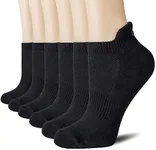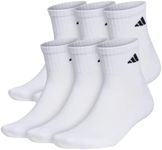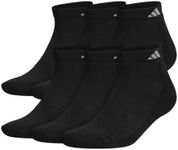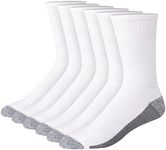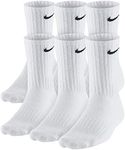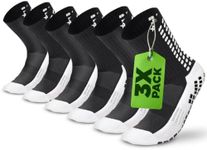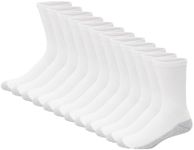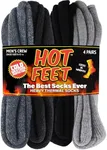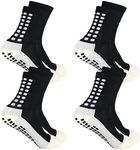Buying Guide for the Best Athletic Socks
Choosing the right athletic socks is crucial for comfort, performance, and foot health. The right pair can prevent blisters, provide support, and keep your feet dry during intense activities. When selecting athletic socks, consider the material, cushioning, fit, and other features that align with your specific needs and the type of activity you engage in. Here are some key specifications to help you make an informed decision:MaterialThe material of athletic socks is important because it affects breathability, moisture-wicking, and comfort. Common materials include cotton, polyester, nylon, and blends. Cotton is soft but retains moisture, which can lead to blisters. Synthetic materials like polyester and nylon wick moisture away from the skin, keeping feet dry. Blends often combine the best properties of different fibers. Choose a material that suits your activity level and the environment you'll be in.
CushioningCushioning in athletic socks provides extra padding in high-impact areas like the heel and ball of the foot. This can help absorb shock and reduce the risk of injury. Light cushioning is suitable for low-impact activities like walking, while medium to heavy cushioning is better for running, hiking, or sports that involve a lot of jumping. Consider the intensity of your activity and your personal comfort preference when selecting the level of cushioning.
FitThe fit of athletic socks is crucial for preventing blisters and ensuring comfort. Socks should fit snugly without being too tight. Look for socks with a good amount of stretch and elasticity to stay in place during movement. Some socks are designed with specific fits for the left and right foot, providing a more customized fit. Ensure the socks match your shoe size and consider any specific fit features that might benefit your activity.
Arch SupportArch support in athletic socks can help reduce foot fatigue and provide extra stability. This is particularly important for activities that involve a lot of standing or running. Socks with built-in arch support have a tighter weave or additional padding in the arch area. If you have flat feet or high arches, look for socks that offer the right level of support to match your foot type and activity.
BreathabilityBreathability is essential for keeping your feet cool and dry. Socks with good breathability are made from materials that allow air to circulate and wick moisture away from the skin. Look for socks with mesh panels or ventilation zones, especially if you engage in high-intensity activities or exercise in hot conditions. Breathable socks help prevent overheating and reduce the risk of blisters.
Seam ConstructionSeam construction affects the comfort and durability of athletic socks. Flat or seamless toe designs reduce the risk of irritation and blisters, especially during long activities. Traditional seams can cause friction and discomfort. If you are prone to blisters or have sensitive skin, opt for socks with seamless construction or flat seams to enhance comfort.
HeightThe height of athletic socks can vary from no-show to knee-high. No-show and low-cut socks are great for a minimalist feel and are often used in low-top shoes. Crew socks provide more coverage and are suitable for activities like hiking or sports where you need extra protection. Knee-high socks offer maximum coverage and support, often used in sports like soccer or for compression purposes. Choose the height based on your activity, shoe type, and personal preference.
